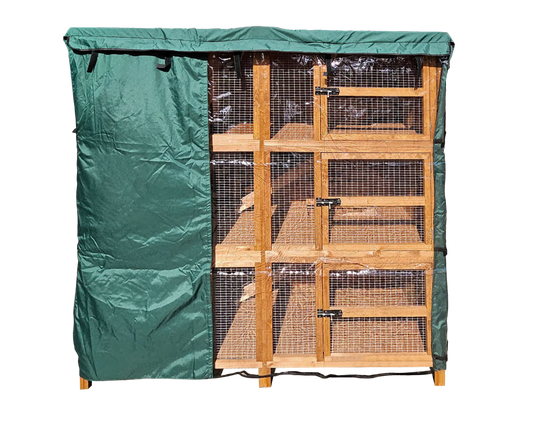The animal testing of cosmetic products and their ingredients has been banned in the UK since 1998 and across the EU since 2009 following years of campaigning by animal rights activists. A sales ban on animal-tested cosmetic products has existed in the UK and EU since 2013, but Britain’s departure from the EU has allowed some animal testing to resume.
After 2019, the UK government permitted what it called “a small number of time-limited licences” for the animal testing of cosmetic components. This, it said, was to align the UK with a decision by the European Chemicals Agency’s (ECHA) Board of Appeal which stated that certain ingredients must be tested on animals before being used by humans to ensure they are safe.
The ECHA ruled that German chemicals company Symrise had to carry out animal tests on two ingredients used solely in cosmetics to satisfy chemicals regulations, overruling EU restrictions on animal testing.
In July 2022, more than 80 companies (including Unilever, The Body Shop, Avon, Boots, Waitrose and the Co-op) joined Cruelty Free International (CFI) in writing to the Home Office regarding the over-turning of the ban. The High Court then granted permission for CFI to apply for a judicial review against the decision.
The High Court ruled that the ban could be reinstated despite the Home Office arguing against it and on 18th May 2023 the Home Secretary issued a statement to say the UK ban on animal testing for ingredients used ‘exclusively’ in cosmetics would be reinstated. However, campaigners say this is effectively only a partial ban as it does not address “substances used exclusively or predominantly as cosmetic product ingredients,” which the original 1998 law covered.
Some ingredients that are used in both cosmetics and for other purposes can still be licensed for animal testing. Ingredients used ‘exclusively’ in cosmetics account for only about 20% of total cosmetic ingredients, leaving the other 80% open to animal testing.
Public opinion is largely against animal testing in the cosmetics industry. UK charity FRAME, which actively funds and promotes alternatives to animal testing, carried out a survey in 2020 about the public’s feelings on cosmetic testing. The result showed that 84% of respondents would not buy a cosmetics product if they knew it, or one of its ingredients, had been tested on animals.
A global issue
According to Cruelty Free International, over 500,000 animals may be used in cosmetic animal testing worldwide every year, with the largest proportion of these animals being used to meet test requirements in China alone. In March 2021 the Chinese government announced that it had created a new pathway for certain types of cruelty-free cosmetics to be sold in China, which is a huge step forward for campaigners who are trying to get the practice of animal testing for cosmetics globally banned.
What products are classified as cosmetics?
The term ‘cosmetics’ encompasses a wide range of products beyond make-up. The Food and Drug Administration (FDA) defines cosmetics as “articles intended to be applied to the human body for cleansing, beautifying, promoting attractiveness or altering the appearance without affecting the body’s structure or functions.” Examples of cosmetics include:
- body and face creams
- body and face lotions
- anti-wrinkle products
- face masks
- soaps
- deodorants and antiperspirants
- perfumes
- aftershaves
- bath and shower gels and foams
- hair colourants
- hair styling products
- shampoos and conditioners
- shaving products
- toothpastes
- make-up
- make-up removers
- nail care products
- sun creams
- tanning products
Cosmetic products can also be classed as drugs when a medical claim is made – such as anti-dandruff shampoos and toothpastes that advertise cavity protection. In these cases, animal testing could be permitted on the grounds that a product is medicinal rather than cosmetic.
What is animal testing?
Rabbits, guinea pigs, hamsters, rats, and mice are all used in cosmetic testing. While dogs and monkeys are not used, they are widely subjected to other types of chemical tests such as human medicines.
A single test for a cosmetic ingredient can use more than 1,000 animals. The rats, mice, guinea pigs and rabbits that are used are bred in facilities solely for the purpose of cosmetic testing and are killed after the tests are completed. No animal used or bred for scientific purposes is afforded the protection that other vertebrate species get under the Animal Welfare Act (2006).
Under the Act, owners and keepers have a duty of care to their animals and must make sure they meet their needs; for a suitable environment and place to live, for a suitable diet, and to be protected from pain, injury, and suffering, as well as being allowed to exhibit normal behaviour patterns. The Act prohibits animal cruelty including causing unnecessary suffering, mutilation, or poisoning. Laboratory animals are exempt from these laws and are subjected to the most horrific procedures.
There are several different tests that are performed on animals to determine their bodies’ reactions to certain ingredients. These include:
- Skin and eye irritation tests – where chemicals are rubbed on to the shaved skin or dropped into the eyes of restrained rabbits without anaesthesia or pain relief.
- Ingestion tests – where chemicals are delivered to mice through repeated force-feeding. These tests can last weeks or months as researchers look for signs of ill health.
- Lethal dose tests – where rats are forced to swallow large amounts of a particular chemical to determine the dose that causes death.
What are the alternatives?
Many researchers still believe that testing an ingredient on animals is necessary to be able to learn how it will affect the human body but scientific progress has raised questions about its continued use.
PETA says, “The use of animals to test a product designed for humans is archaic and ineffective, in addition to being unethical, as these tests do not produce the most rigorous results possible. Scientifically, they are now less robust than some of the new methods that have been developed.”
There are already effective alternative testing options for cosmetics that do not require either animals or consumers to suffer. Some of these alternatives are proven to be more effective, more reliable, and faster than animal testing yet cosmetic ingredients continue to be tested on animals.
Here are some of the alternative methods now being used:
- In-vitro techniques – Almost every type of animal and human cell can now be grown in a laboratory. These can be used in a controlled environment in a test-tube to study the effects of different compounds on cell structures. Human tissues that have been donated following surgery or death can also be used in place of animals in determining the safety of a product.
- Human volunteers – Animals are being replaced in the advanced stages of testing with human volunteers who agree to skin sensitivity testing in cosmetics. A technique called micro dosing can also be used with human volunteers. This involves giving very small doses of a product to humans to see how the body reacts while reducing the risk of toxicity from a larger dose. Micro doses are injected into human volunteers and measured in blood samples using a very sensitive measuring device.
- Sophisticated computer models – Different human organs can be modelled on computer and used to conduct tests based on existing information and statistical data.
CFI’s statistics show that crude skin allergy tests in guinea pigs only predict human reactions 72% of the time, and mice only 74% of the time. In contrast, combining chemistry and cell-based alternative methods have shown to accurately predict human reactions up to 85% of the time.
The Draize skin irritation test in rabbits can only predict human skin reactions 60% of the time, whereas methods using reconstituted human skin are up to 86% accurate.
The carcinogenicity test, which involves the use of around 400 animals per test, is notoriously unreliable with an estimated prediction of human cancers of only 42%.
PETA says that when you consider the biological differences between humans and the animals commonly used in toxicity tests (and the stressful conditions these animals are forced to endure) it adds up to meaningless results that fail to protect humans. Cutting-edge technology is such that today there is no need for any animal to suffer when the safety of cosmetics and their ingredients are being assessed.
There is already a list of 5,000 ingredients that have been tested and deemed as safe for use in human cosmetics so there are plenty of chemicals available without the need for further animal testing.
How do you know if the cosmetics you are using are 100% cruelty free?
PETA holds a database of cruelty-free cosmetics and personal care products that have not been tested on animals which you can use on its website – crueltyfree.peta.org. More than 5,200 companies and brands that don’t test on animals are included. You can also download the Bunny Free mobile app (www.peta.org/action/bunny-free-app) to enable you to search products easily while you are out shopping.
The Leaping Bunny programme began in 1996 when a group of eight animal protection groups including American Anti-vivisection Society, Beauty Without Cruelty and Humane Society of the United States teamed up to make an internationally recognised logo that would help consumers to choose genuine cruelty-free products. Partnered with CFI, the Leaping Bunny logo soon became recognised in the United States, Canada, the UK and throughout most of the EU as a guarantee of cruelty-free products, acting as the global gold standard and providing assurance to consumers.
You can search for Leaping Bunny certified companies via the website at crueltyfreeinternational.org/leapingbunny
Some big brands – including Estee Lauder, Clinique, Maybelline, Clarins, Bobbi Brown and Benefit – pay for tests on animals in China so that their products can be made available to the lucrative Chinese market.
What can you do to help?
In addition to not buying cosmetics from companies that use animal testing you can help to take action by asking the European Commission and ECHA to suspend all outstanding animal test requests for chemicals used exclusively as cosmetics ingredients.
PETA has a template message on its website which you can sign and send. You can find it at https://secure.peta.org.uk/page/81100/action/1/. You can also help raise awareness of the issues surrounding animal testing by sharing information with your family and friends – in person or via social media.
CFI has a petition on its website calling for the UK government to rule out all cosmetics animal testing, resorting to the full ban that was in operation from 1998 to 2019. You can add your own name to the petition at crueltyfreeinternational.org/make-change/cosmetics/uk-cosmetics.
For more information
Find out more about the organisations working to bring an end to animal testing in cosmetics and the ways in which you can help:
Founded in Bristol, UK in 1898 by Irish writer and suffragette Frances Power Cobbe. It began as the British Union for the Abolition of Vivisection (BUAV), changing its name to Cruelty Free International in 2012.
This global organisation works to help all animals, not just those in laboratories. It promotes human-animal interaction to tackle the existence of cruelty that innocent animals experience.
Founded in 1980, People for the Ethical Treatment of Animals (PETA) is the largest animal rights organisation in the world. It focuses its work on the four main areas where it sees animals suffering – in laboratories, in the food industry, in the clothing trade, and in entertainment.









